
Publishing Date Set!
I am late with this newsletter. Sorry. But I wanted to wait until I could give this announcement...
BNR Press has set a release date for the second edition — next February — in time for the Strasburg stock and bond show.
If you have been following these newsletters, you know that the next edition will be almost twice as large as the last. I have been incredibly fortunate to have the help of dedicated collectors in the U.S., Germany, France, Italy, Switzerland, Spain, Canada, and the U.K. All told, the second edition will probably list about 13,500 different certificates. If you count all the variations of issued, unissued, autographs, specimens, and proofs, I think we’ll see about 18,000 entries by press time. I guess the book will run over 400 pages.
In order to keep the price affordable, BNR Press is again selling advertising for the book. Please contact Fred Schwan at BNR Press, 132 E. Second St., Port Clinton, OH 43452 if you are interested in advertising. E-mail fred@papermoneyworld.net.
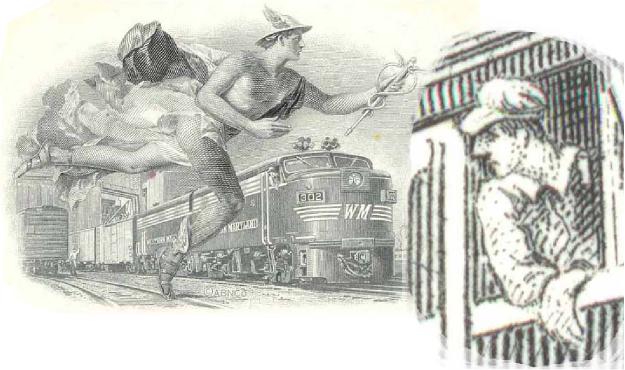 Details don’t need to be flawless to yield exquisite engravings. Here is a close-up view of the conductor aboard Western Maryland loco #302. Enlarged approximately 10 times.
Details don’t need to be flawless to yield exquisite engravings. Here is a close-up view of the conductor aboard Western Maryland loco #302. Enlarged approximately 10 times.
Theoretically, most of the major certificate dealers ought to carry the second edition of my book. If you are a dealer, and want to resell the book, please contact Fred to make sure he knows of your needs.
Many of you know that I have been thinking of self-publishing. So, I am most grateful of Fred’s decision to publish the second edition.
Other than cost, self publishing was not going to be a big challenge. But, my largest concern has always been that I do NOT want another job as publisher. Tracking and keeping the database current is time-consuming enough. Self-publishing would have been a tremendous drain on my time.
One more time, I thank everyone who has sent suggestions and publishing alternatives. I cannot tell you how much I appreciate your support and ideas.
Let’s keep our fingers crossed. And please, make sure you give Fred as much encouragement as you’ve given me!!!
566 New Certificates Since June
|
1st Edition |
Last Issue |
Currently |
| Number of certificates listed (counting all variants of issued, specimens, etc.) |
8,559 |
14,112 |
17,369 |
| Number of distinct certificates known |
7,152 |
11,146 |
13,360 |
| Number of certificates with celebrity autographs |
699 |
1,175 |
1,376 |
| Number of celebrity autographs known |
232 |
342 |
317 |
| Number of railroads and railroad-related companies known |
17,276 |
19,805 |
23,576 |
| Number of companies for which at least one certificate is known |
3,516 |
5,001 |
5,733 |
Pictures for the next edition
In the first edition, Fred Schwan handled all of the certificate scanning. This time, I plan to reflect the wonderful contributions you have given.
For the last few months, I have been collecting high quality images from contributors. I probably have a sufficient number of images for the next edition.
I have not retained all the images that were sent, however. Some had problems of resolution, brightness, color, or whatever. Others were duplicates.
So...if you want to contribute images of some of your favorite certificates, send me a few scans. I think 200 dpi scans at full scale ought to yield small images for the book.
Make sure you scan entire certificates with all edges showing. Coupons are unnecessary. For larger items, scan in pieces with sufficient overlap. Send me the pieces. Do not waste time trying to patch them together. Scan against a white background.
Tell me if you prefer anonymity. Otherwise I plan on a line like, “COL-123-B-10, courtesy of John Collector.”
How to patch (stitch) large scans
Most bonds, and even some stock certificates, are too large for home scanners. So, when you send large images to me, I prefer them in pieces.
However, collectors often like to patch images together for their own uses. Major uses include insurance records and online auctions.
Here is a synopsis of how to "stitch" together images using image manipulation programs such as Photoshop.
Scan your certificates in two or more pieces. Scan all of the pieces with the same orientation to control color. Scan against a white background. NOT black. NEVER color. Overlap pieces at least one inch. More overlap is better.
1) Use one side as your master and enlarge your work space to accommodate the next piece. Select part of the second scan to combine with the first. Avoid selecting the edge in the overlap area, because that is where the most distortion occurs. Cut and paste the selected area into your master image.
2) Make the inserted image semi-transparent. The idea is to be able to look through the top piece to match pieces exactly.
3) Match up the images at one point near an edge. The easiest feature to match is text (as in the example on page 2.)
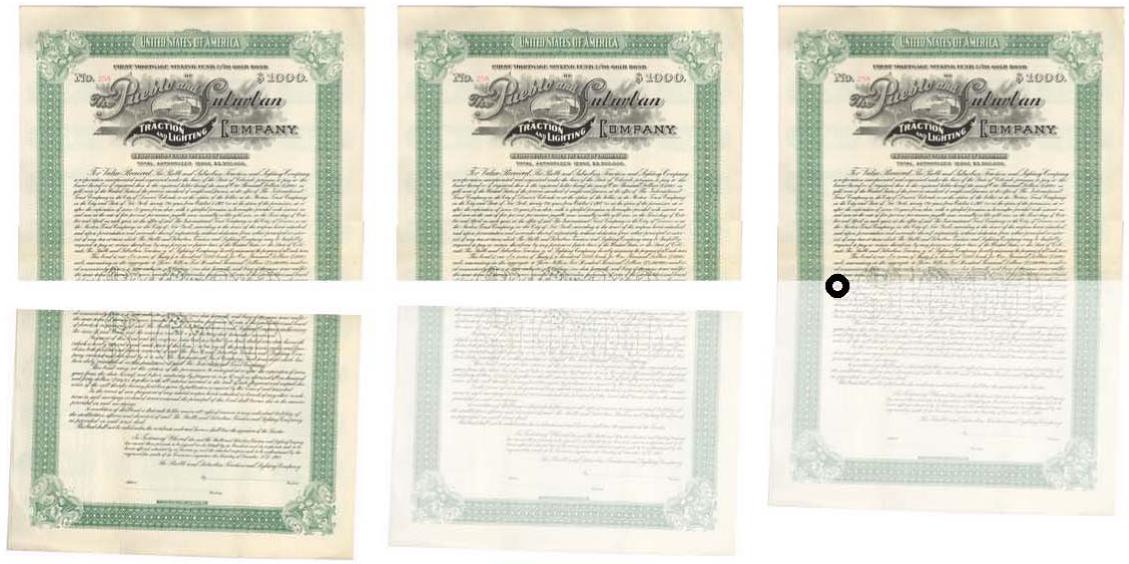
| 1) Using the top as the master, cut and past part of the second scan into the work area. (If there were a 1" overlap, select all but 1/2" in the overlap area.) |
2) Make the bottom part semi-transparent. |
3) Move the transparent piece so it matches in ONE place near an edge. The easiest features to match are letters in text. |
4) Using that same point as a pivot, rotate the second image so the two images match in the overlap area.
5) Change the transparent piece of the scan back to a solid appearance.
6) Combine the two images. Depending on your program, this process is called “merging” or “flattening.”
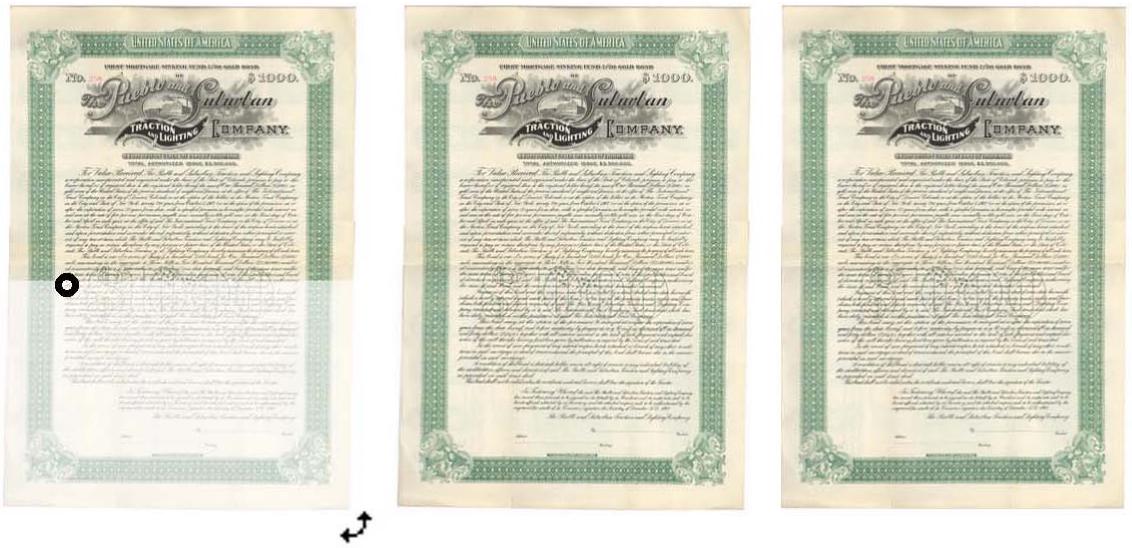
| 4) Using the same match point as a pivot, rotate the transparent piece into accurate position. |
5) Adjust the transparency back to 100%. |
6) "Flatten" (merge or combine) the two pieces into one image and crop to improve appearance. |
Your first attempt at patching will be hard, and VERY time-consuming. Do not get discouraged. Your second patch will take half the time.
Trick: Practice with manageably sized images. Unless you have a very powerful computer, use 72- to 100-dpi scans for your first patching job. The lower the resolution, the easier the job will be.
Trick: If you have several certificates to patch, choose one consistent side as your master. for instance, always use the top or the left side.
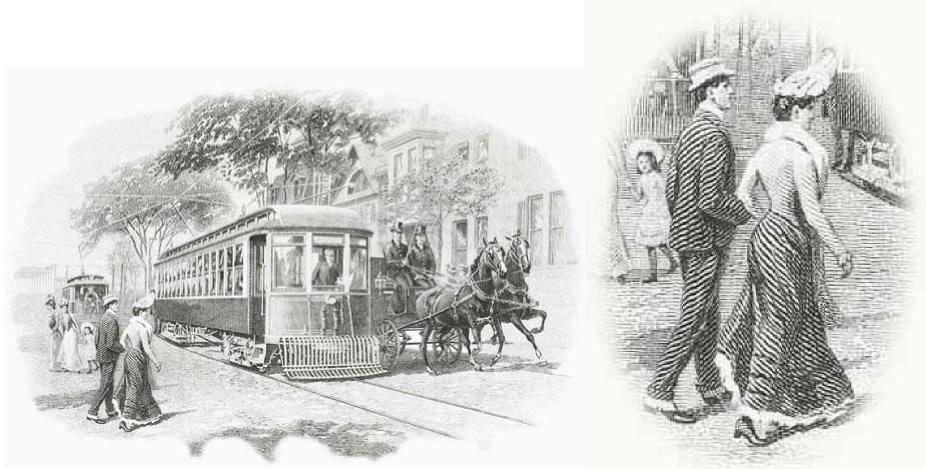
A superb streetcar image from American Bank Note Company. The engraving is probably known most widely from the Omaha & Council Bluffs Street Railway Company.
.
In the time left before the second edition...
I mentioned some time ago that, between the database and the online text, I have created a tremendous opportunity for errors. I guess that there are approximately 600,000 to 800,000 words available online.
The words you will see in the certificate listings are the exact words that will appear in the second edition. If there is one thing you can do, it is to check for errors in the database. Compare your certificates with the ones I have listed and tell me where I have made mistakes. Look especially closely at the “Quickfind” charts.
I have re-written practically all of the original text for the second edition. Consequently, the rest of the text on the web site is not the text you will see in the second edition. However, if you want me to discuss additional subjects, tell me now. Or tell me if you would like subjects covered in more or less detail.
Minor celebrities
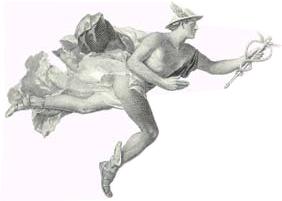
New celebrity signatures get incorporated into the database as they appear on the auction market. However, I also remove minor celebrities from time to time.
I do that because I consider it deceptive to imply that the signatures from minor celebrities have widespread collectible value. Many celebrities were locally important, but were obscure or unknown on a national or international stage.
One such minor celebrity I am thinking of removing is Henry Oppenheimer. I am asking your direct input. Why should I keep him in the database? Why should a collector consider him worthy of collecting? Why is he important? Why should a collector in another country pay a premium?
Similarly, are they other minor “celebrities” that should be removed?